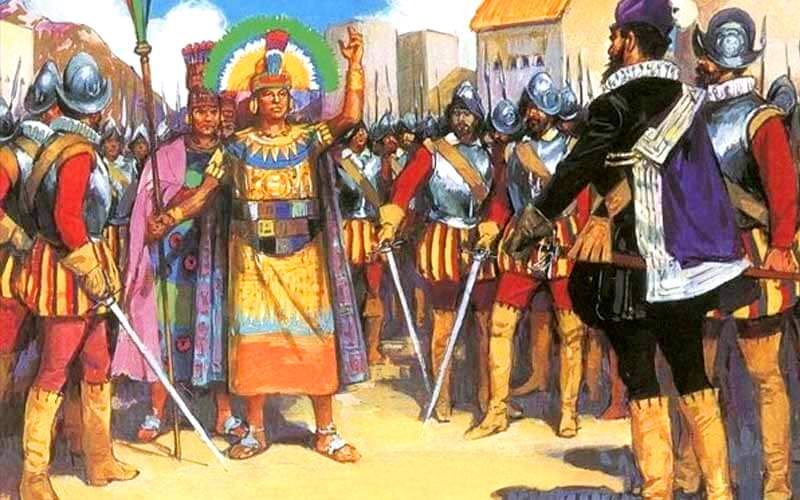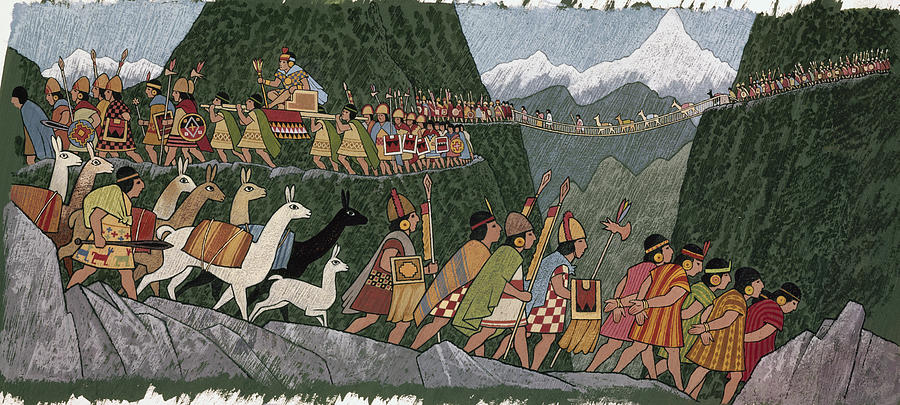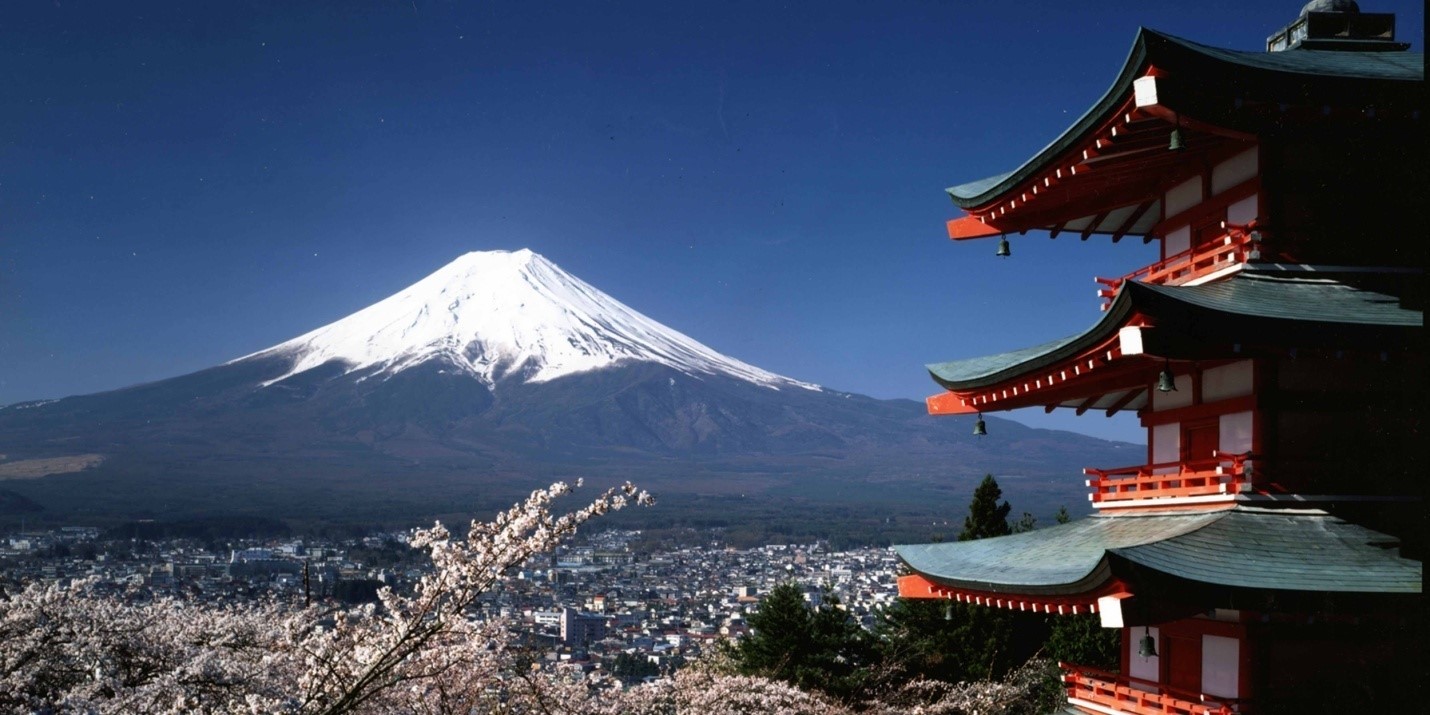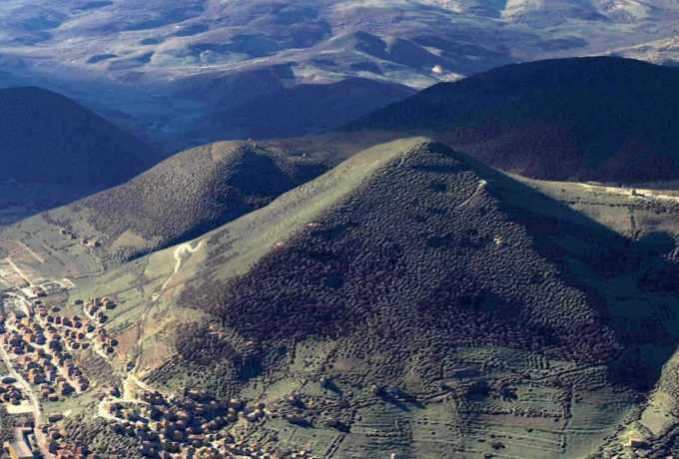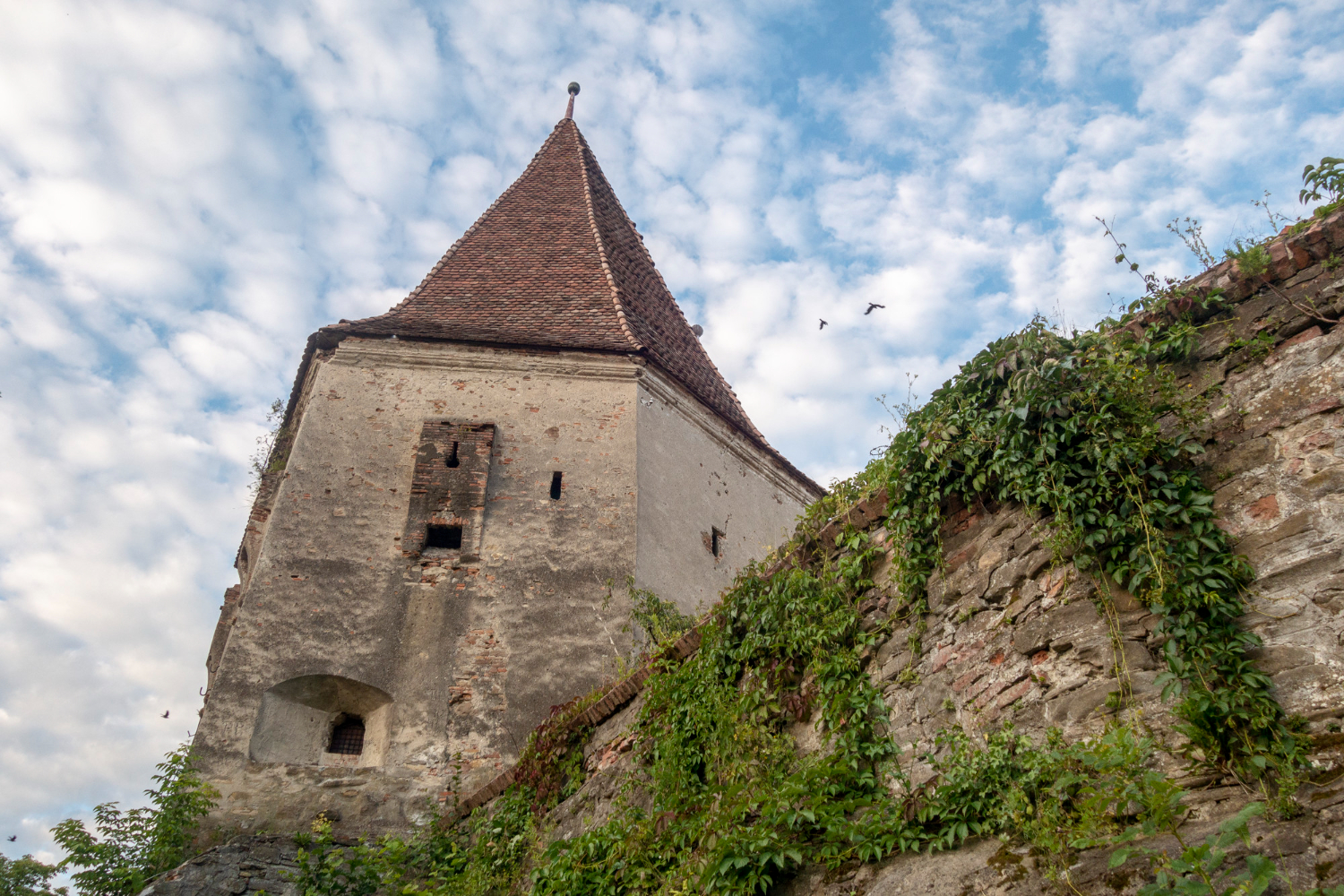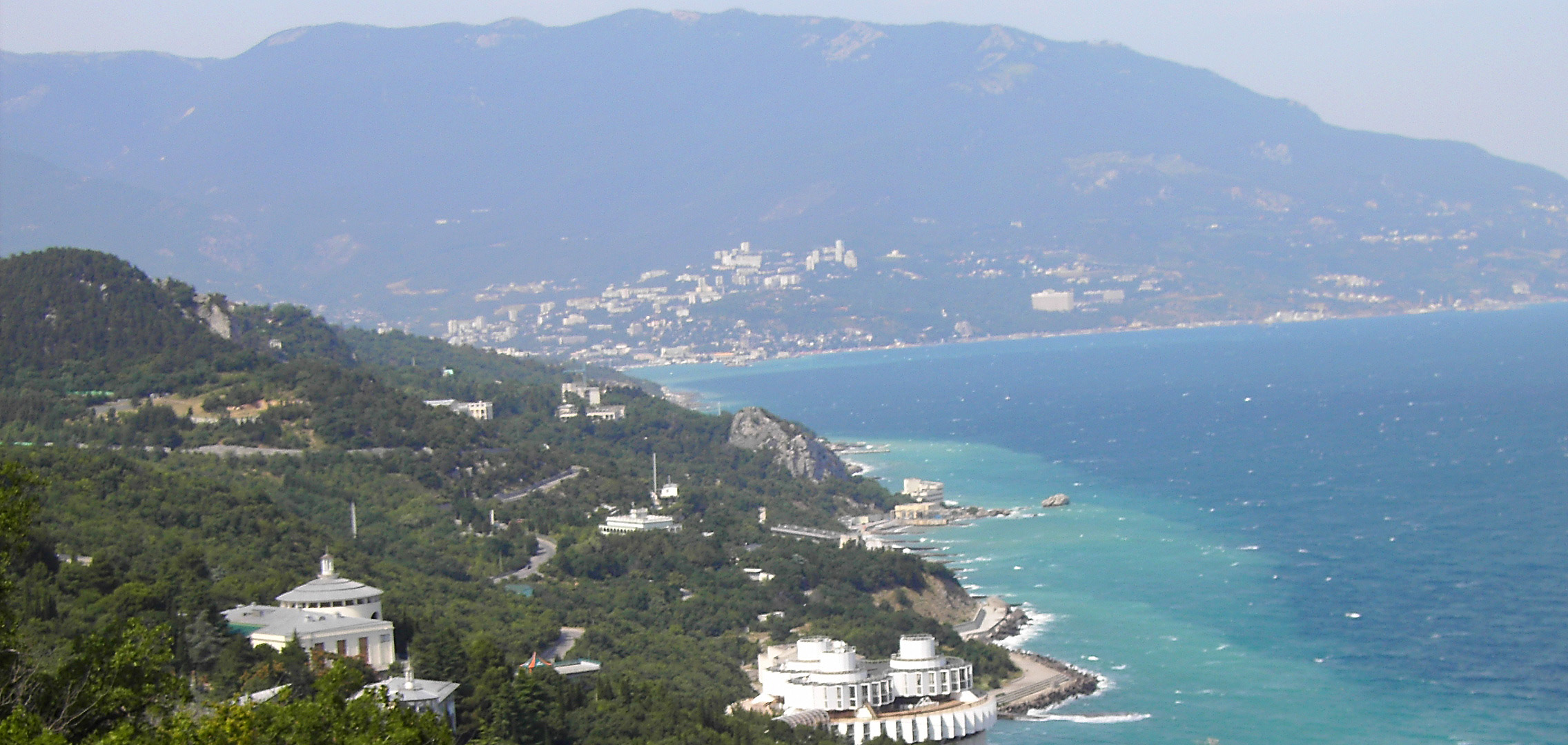The Inca Empire was the death of other laws to the coming of Europeans. The emergence of the New World meant, in fact, the destruction of ancient civilizations, fascinating and barbaric in the eyes of those who watched from the churches, through the keyhole.
The decay of Atahualpa is a story about greed, violence and good and bad gods, whose consequences were devastating for the entire Inca civilization. Spanish conquistadors managed to capture only the gold and silver thesaurus of the Incas, and not the grandeur of a civilization unique.
On the San Juan river in today Colombia, a small Spanish ship sailing to south towards Peru in search of treasure and tribes. Is the year 1527 and, after the ship passes the equator, sister boat, which is under the command of explorer Francisco Pizarro, left behind and dock on the river, crew, tired and hungry, waiting for news from those gone on the boat for recognition.
A previous expedition, along the South American Pacific coast in 1524, did not disclose nothing but empty fields, hostile native inhabitants and no wealth. If the explorers returned empty-handed again risked to not receive a new funding for another expedition.
But when the ship approached the coast of what is now the land of Ecuador, observed a sail on the horizon. Soon arose a huge raft of balsa wood, with 22 people on board and equipped for propulsion, large, well-woven cotton sailing .
Eleven of the crew members jumped into the water craft to the Spanish ship, but the remaining ones with cork and assets that were on it were captured. They told the Spanish about the wonderful land full of riches that are further south.
“They wore many silver and gold objects as a personal adornment … and also crowns and diadems, belts, bracelets, leg armor … groups and ruby beads, wool and cotton jackets … emeralds and other precious stones … “reads a enthusiastic letter sent to Holy Roman Emperor, Charles V.
It was the first real evidence that a rich , native kingdom was nearby and spanish crew, inspired by the new discovery, returned to San Juan to plan a new expedition. But their accidental discovery was to have a devastating impact, long-lasting impact on the Inca Empire, until then unknown to world.
Anarchy in the Inca Empire
While spanish conquistadors were concerned with congratulations and celebrating success achieved, with many plans for a return expedition, Huayna Capac, ruler of the kingdom, which they wanted to conquer, was dying, killed by smallpox – a fatal infectious disease brought to the New World by european explorers.
Capac’s untimely death at the age of 59, threw the kingdom into chaos. Traditionally to all the kings of the Incas, Capac married his own sister, but was known to have had at least 50 children with other women, all of which could rightfully claim the throne. When the appointed heir by Capac died also of smallpox, broke a fierce battle for succession.
Finally, the leader’s choice was limited to two candidates: Atahualpa, that lived in the north, and his half-brother, Huascar, in the south. According to the most credible evidence yet, Huascar was crowned king in the Cuzco capital after his father’s death – ceremony which Atahualpa did not participated.
Becoming suspicious on the intentions of his brother and wanting to end the succession dilemma forever, Huascar declared war to his brother. Events escalated into a civil war that lasted until 1532, when the two Inca armies faced for the last time, on land west of Cuzco, in what was called the Battle of Quipaipan. Here, Atahualpa was victorious, capturing his brother and occupying the capital. The Great Inca Empire had a new leader.
An empire of the sun
Atahualpa was the heir of a sprawling and rich empire, which stretched more than 5000 km – from Quito, Ecuador to beyond Santiago, Chile – comprising large valley in the high mountains, tropical forests and arid deserts.
Inca civilization was a blend of different cultures, people and different languages, all led by Sapa Inca (ie, “the only Inca”). Religion was one of the pillars of Inca life and maintaining a good relationship with the deities were made through rituals and offerings, including human sacrifices. It is said that up to 4,000 people were sacrificed on Capac’s death, and in the important moments, even children were killed.
As the Sapa Inca, Atahualpa, over the age 20, was worshiped as the son of one of the most important gods of the Inca Empire: Inti, the Sun God. According to spanish historian Francisco de Xerez, Atahualpa was “handsome and stately, although somewhat small stature, but well connected, with a large face, beautiful and fierce, with his eyes red with blood”. In order to highlight the status, it is likely that, from birth – with other children who were part of the nobility – Atahualpa would been subjected to a process of deformation of the skull to give the head a distinctive conical shape.
The first meeting between Atahualpa and Pizarro and his spanish conquistadors took place when the king, along with his soldiers, enters triumphantly in Cuzco, after the military victory of Quipaipan.
Notices concerning the presence of foreign white skins settled a town near the coast – known as San Miguel de Piura – came to the Emperor for some time and he was curious to see who they could be. At first, there was a fear that these mysterious white could be gods. Several messengers were sent out to meet the spanish troops to bring more news.
The brought news to Atahualpa, being in a safe place in the mountains of Cajamarca in the northern highlands of Peru, were reassuring. Pizarro and a group of almost 200 people were dead, and, even so, did not represent a real military threat. Now fully confident, Atahualpa – surrounded by his warriors, the feeling of invincibility still through his veins – decided calculated, but ultimately fatal, to meet with the spanish.
Caxamala massacre
Learning that Atahualpa wants to meet them, and they were eager to see him too, the conquistadors moved freely through the mountain passes of Peru, where they settled camp, in the left city Caxamala, in the Andes. Knowing that this handful of people were not a real force in front of thousands of Inca warriors who surrounded the Emperor, Pizarro appeared friendly and invited Atahualpa to dine with him.
Entrusted to its divine origin and confident that so few people could not move before its fabulous army , Atahualpa agreed and went to town with a few members of his procession, unarmed.
According to Hernando Pizarro saying, the brother of the expedition commander, Francisco, “Atahualpa came worn on a palanquin, and in front of him were three or four thousand of indians in uniforms, clearing the way for straw and singing… then arrived Atahualpa in the middle of his main men, the largest of them being carried on men’s shoulders”.
The King and his retinue entered the city and gathered in the park. There, they were greeted by monk Vincente Valverde, accompanied by an interpreter, submitted towards the Incas, holding in hand a cross and a Bible. A popular legend says that Valverde gave Atahualpa his Bible, telling him that contained the word of God, asking him to embrace the Catholic religion. Atahualpa is said to have held the Bible in his ear before throwing it on the ground – then said, angry and nervous, he could not hear a word and asked the spanish to leave his lands.
Almost instantly, the spanish troops got out of abandoned buildings, unleashed a rain of fire on unarmed Incas and they tied the horse.
Desperate to protect their divine ruler, Atahualpa’s companions gathered around palanquin, positioning themselves between the Emperor and the Spaniards who were advancing towards him. Some sources report as though the hands and palms were injured, many still trying to keep up the palanquin, and one by one fell down.
Pizarro himself is said to have participated in the slaughter to capture Atahualpa, being aware of the value of the Emperor in captivity. The Inca leader, stunned, was pulled from the palanquin and locked in a room in the city. Meanwhile, the people in his retinue who managed to escape the massacre fled the scene, believing perhaps that their beloved leader had been killed, and those beyond the city walls gave no reply, so shocked they were from the bloodbath at Caxamala.
The price of life through and under God’s eyes
Atahualpa realized quickly that beyond religious fanaticism of the kidnappers, lay an ardent thirst for gold and riches. So he promised Pizarro that will fill the room he was detained with gold and silver in exchange for freedom.
Pizarro agreed with the proposal of the Emperor and immediate orders were given to Cuzco and other cities of the Inca Empire for gold and silver to be removed from the palaces and temples and sent to Caxamala immediately. Incas, listeners have sent so much gold and silver as they could, including statues, jewels, works of art.
As large quantities of precious stones streamed from all over the empire, Atahualpa was given more freedom. He was allowed to entertain his favorite wives and meet his favorite subjects, but during this time he received christian teachings from the spaniards who captured him.
Until May 1533, almost all Inca treasure – around 24 tonnes – had been received and melted into ingots of gold and silver, but the problem remained Atahualpa’s future. Many spaniards wanted the king to be killed, citing rumors of an imminent attack to rescue him. Finally, a trial was held to decide the fate of Atahualpa.
”As for my faith, I will not change it. Your God, as you say, was killed by the very people he created. But my God still takes care of his children”, Atahualpa, 1533
Accusations of polygamy, incestuous marriage, incitement to rebellion and idolatry are just some of what accusations that were brought to Atahualpa. He was sentenced to death by burning.
Convinced that his soul can not pass into the afterlife if he was burned in his last moments, Atahualpa agreed to be baptized into the Catholic faith and thus his sentence was changed to death by strangulation. When the halter was squeezed around Inca Emperor’s neck, the death bells rang for the entire Inca empire: in 40 years, the far Inca civilization collapsed, and Sapa Inca have never ruled again.
